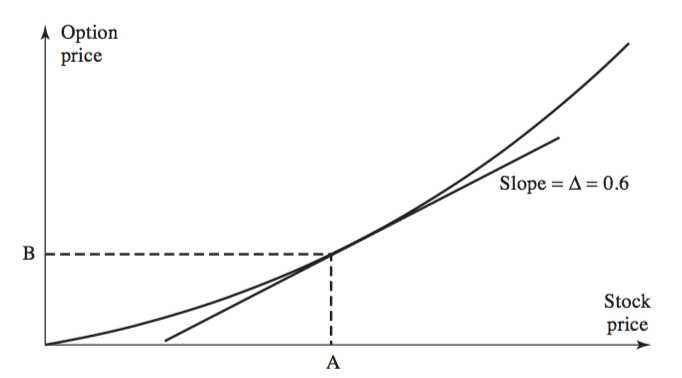
There are many kinds of data mining software. Each software has its own capabilities. These tools are both common and more sophisticated. Alteryx Design is a self service data science tool. It performs integral tasks like merging data from different sources. It offers repeatable workflows that allow for self-service analysis and also facilitates data mining. Alteryx Designer, one of five products that make up the Alteryx product suite. They can be installed on site or in SaaS and are suitable for all sizes of organizations.
Data mining
The process of data mining consists of five stages: collection of data, loading of data into a data warehouse, storage on an in-house server, or cloud data. Data mining software sorts the data using user results. End-users can then present the results in a user-friendly way. Data mining can be a complex process, but the software is available to ease the process. Check out this infographic for more information.
The first step of the process is the collection of raw data. Data is collected from multiple sources including structured and non-structured data. It may be exploratory, with preliminary patterns discovered during the process. Next, the data are selected for analysis and modeling. Next comes data preparation. This is where stakeholders determine the variables and dimensions they want to explore. The data set can be used to create models once it has been completed.
Tools used in the process
Data Mining tools are software that analyzes and interprets large amounts of data. These tools can be used to identify trends and develop predictive models. Teradata databases can be used by companies to predict future sales. Teradata could also be used to create reports and notify of events. A company might also use the information to better understand product inventory. A business might even use data mining tools to improve customer service.
There are many software options available for data mining. Among these, Rattle is a graphical user interface (GUI)-based Data Mining Tool that is written in the R statistical programming language. It also includes a log code tab that allows users modify and explore their data set. The software can also be used to perform Ad Hoc Analysis. Rattle, although there are many options for creating and running predicative models, is the most used.

Common tools
SAS data mining software can provide powerful predictive as well as descriptive modelling capabilities. The software is particularly useful for quickly developing models and exploring relationships and patterns. The software supports multiple data sources, and can be used without writing complex code to integrate multiple data sets. It can be customized to fit business needs and comes with a distributed memory processor architecture. It is easy to use and allows for data exploration and visualization. It is not the best data mining software. This software requires extensive knowledge in array language.
Orange is an open source data mining tool that can be used for free. It is very easy to use by beginners and provides a variety educational activities and workflows. It can be programmed easily in Python, which makes it different from other data mining software. It supports data visualization and predictive model. It works with multiple SQL databases. These tools make data mining easier and more efficient.
High-end tools
There are many options for data mining software on the current market. Some of these tools are useful for preparing data for mining and using it for predictive analysis. IBM software is one such example. Its data science tools make it easy for organizations to tap their data resources efficiently. IBM software is available both in free and paid editions. This article highlights the key features and benefits offered by the most well-known data mining software.
Data miners commonly use R as a programming language. It's powerful and can blend data from multiple sources. Other tools include Pentaho, a comprehensive platform for business analytics and data integration. Tanagra is another common tool used by data miners. It provides supervised learning, clustering and factorial analysis, as well as feature selection and construction algorithms.
Open source tools
Open source tools are available for those who are new to data mining. Python is one example of a popular programming language that has a large library and user community. Python is not a proprietary language for programming. Instead of being a drag-and–drop interface, it has powerful visualization capabilities and an intuitive user interface. Python is extremely simple to learn, and anyone can make and maintain Data mining software.

Rattle is an open-source Python library that's compatible with Windows, macOS, and Linux systems. It offers data modeling, visualization, and statistical analyses. Pandas is another widely-used open-source Python library. This powerful tool enables data scientists and developers alike to search their data for patterns and uncover them. The library also allows users to modify and enhance the code. A detailed tutorial is also provided by the program for people who are just starting to learn about data mining.
FAQ
Where can you find more information about Bitcoin?
There is a lot of information available about Bitcoin.
Where Can I Sell My Coins For Cash?
There are many places where you can sell your coins for cash. Localbitcoins.com offers a way for users to meet face-to–face and exchange coins. Another option is to find someone willing to buy your coins at a lower rate than they were bought at.
What is a "Decentralized Exchange"?
A decentralized exchange (DEX), is a platform that functions independently from a single company. Instead of being run by a centralized entity, DEXs operate on a peer-to-peer network. This means that anyone can join the network and become part of the trading process.
When is it appropriate to buy cryptocurrency?
If you want to invest in cryptocurrencies, then now would be a great time to do so. Bitcoin prices have risen from $1,000 per coin to nearly $20,000 today. It costs approximately $19,000 to buy one bitcoin. The market cap of all cryptocurrencies is about $200 billion. As such, investing in cryptocurrency is still relatively affordable compared to other investments like bonds and stocks.
What is the best way to invest in crypto?
Crypto is one market that is experiencing the greatest growth right now. However, it's also extremely volatile. You could lose your entire investment if crypto is not understood.
The first thing you should do is research cryptocurrencies such as Bitcoin, Ethereum Ripple, Litecoin and many others. There are plenty of resources online that can help you get started. Once you decide which cryptocurrency to invest in you can then choose whether to buy it directly or from an exchange.
If your preference is to buy directly from someone, then you need to find someone selling coins at an affordable price. You can buy directly from another person and have access to liquidity. This means you won't be stuck holding on to your investment for the time being.
If your plan is to buy coins through an exchange, first deposit funds to your account. Then wait for approval to purchase any coins. There are other benefits to using an exchange, such as 24/7 customer support and advanced order booking features.
Statistics
- “It could be 1% to 5%, it could be 10%,” he says. (forbes.com)
- For example, you may have to pay 5% of the transaction amount when you make a cash advance. (forbes.com)
- Ethereum estimates its energy usage will decrease by 99.95% once it closes “the final chapter of proof of work on Ethereum.” (forbes.com)
- Something that drops by 50% is not suitable for anything but speculation.” (forbes.com)
- A return on Investment of 100 million% over the last decade suggests that investing in Bitcoin is almost always a good idea. (primexbt.com)
External Links
How To
How to get started investing in Cryptocurrencies
Crypto currencies are digital assets which use cryptography (specifically encryption) to regulate their creation and transactions. This provides anonymity and security. Satoshi Nakamoto invented Bitcoin in 2008, making it the first cryptocurrency. Many new cryptocurrencies have been introduced to the market since then.
Bitcoin, ripple, monero, etherium and litecoin are the most popular crypto currencies. A cryptocurrency's success depends on several factors. These include its adoption rate, market capitalization and liquidity, transaction fees as well as speed, volatility and ease of mining.
There are many methods to invest cryptocurrency. Another way to buy cryptocurrencies is through exchanges like Coinbase or Kraken. Another method is to mine your own coins, either solo or pool together with others. You can also purchase tokens via ICOs.
Coinbase, one of the biggest online cryptocurrency platforms, is available. It lets users store, buy, and trade cryptocurrencies like Bitcoin, Ethereum and Litecoin. Users can fund their account using bank transfers, credit cards and debit cards.
Kraken is another popular cryptocurrency exchange. It offers trading against USD, EUR, GBP, CAD, JPY, AUD and BTC. Some traders prefer trading against USD as they avoid the fluctuations of foreign currencies.
Bittrex is another popular platform for exchanging cryptocurrencies. It supports over 200 different cryptocurrencies, and offers free API access to all its users.
Binance is an older exchange platform that was launched in 2017. It claims to be one of the fastest-growing exchanges in the world. It currently trades volume of over $1B per day.
Etherium is a blockchain network that runs smart contract. It uses a proof-of work consensus mechanism to validate blocks, and to run applications.
Accordingly, cryptocurrencies are not subject to central regulation. They are peer-to–peer networks that use decentralized consensus methods to generate and verify transactions.